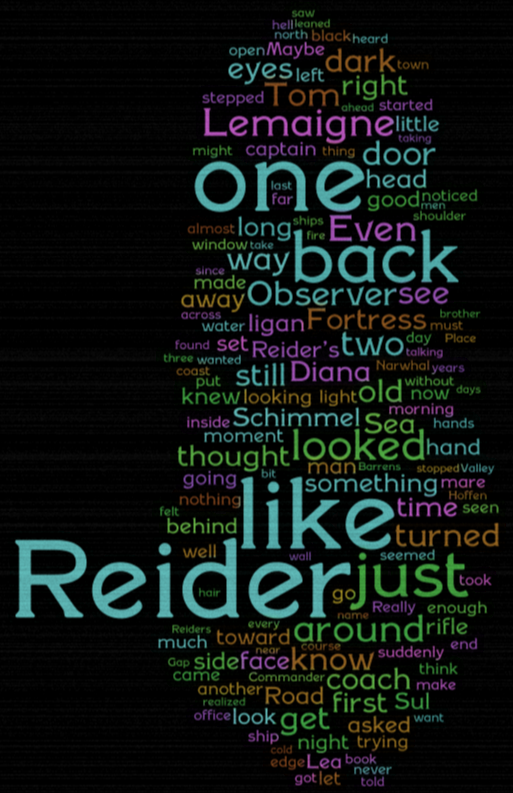
 Les Edgerton recently explained the difference between what “action” and “problem” mean in lay language and in literature, to show how the confusion about terminology creates problems in writing education.
Les Edgerton recently explained the difference between what “action” and “problem” mean in lay language and in literature, to show how the confusion about terminology creates problems in writing education.

 Les Edgerton recently explained the difference between what “action” and “problem” mean in lay language and in literature, to show how the confusion about terminology creates problems in writing education.
Les Edgerton recently explained the difference between what “action” and “problem” mean in lay language and in literature, to show how the confusion about terminology creates problems in writing education.

 At the Huffington Post, Rebecca Serle interviews Newberry Prize winning author Kathi Appelt, specifically on the subject of American Fantasy. Not fantasy fiction written by Americans, but fantasy fiction that draws on American locales and imagery.
At the Huffington Post, Rebecca Serle interviews Newberry Prize winning author Kathi Appelt, specifically on the subject of American Fantasy. Not fantasy fiction written by Americans, but fantasy fiction that draws on American locales and imagery.
Regular readers know that I have been all over this like a bear on a beehive with my Story Behind the Story series, explaining how I wanted to step away from the elves and swords and write fantasy that drew on American imagery and textual artifacts the way Tolkien drew on northern European imagery and textual artifacts.
Appelt could not echo my sentiments more clearly than when she says: Continue reading
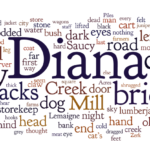
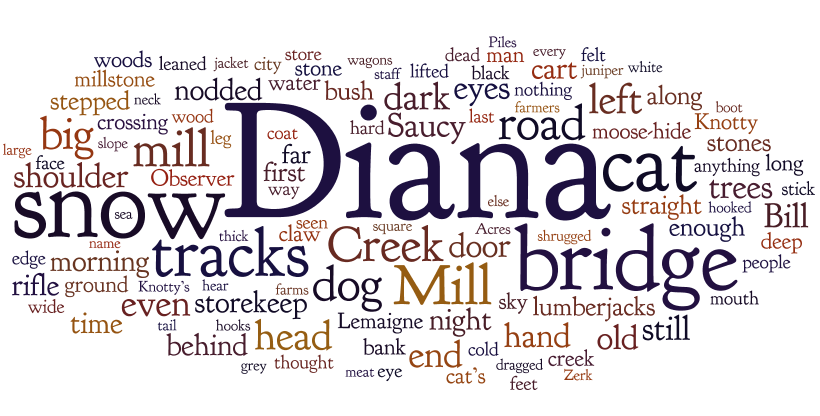
Courtesy of wordle.net, a word cloud of the short story “The Dun Cat of Mill Bridge.”
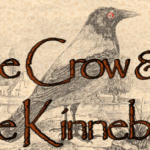
As my regular readers (both of you) know, the short story prequel to The Ligan of the Disomus I decided to write in November, “The Crow and the Kinnebeck,”* has reached 4000 words at perhaps one fifth to one fourth complete, and is stubbornly insisting on becoming a novelette. At the least.
The first of eight parts is up now for my First Readers, God bless ’em, but for everyone else let me present a world cloud based on that first part, courtesy of wordle.net.
_
* I’m under the impression that keeping the title inside quotes, rather than italicized, will convince it that it is indeed a short story. You know, like trimming a bonsai.

 Nathan Bransford makes it simple: the format of your query letter should be boring and straightforward, and the description of your work is the part you need to “sweat.” (By the way, I stole copied borrowed the blog title emphasis style from Nathan.)
Nathan Bransford makes it simple: the format of your query letter should be boring and straightforward, and the description of your work is the part you need to “sweat.” (By the way, I stole copied borrowed the blog title emphasis style from Nathan.)
He also links to two other very good recent blogs on query letters. Holly Root at the Waxman Agency also emphasizes the importance of good writing over all else, while Michael at Dystel & Goderich downplays the formatting details while playing up the importance of reflecting your work in the query.
For my own part, I was never too obsessed with formatting issues like font or paragraph style. Considering that I work as an editor in an organization with very strict formatting standards, and regularly kick writers in the face for daring to give me something in Courier New rather than Arial, I can’t decide whether it’s ironic that I’m more relaxed about format than the typical writer (as described by agents) or it’s expected that familiarity with ferocious format issues makes me less skittish in their presence.
But, I have to confess that I aaggoonniizzeed over how to accurately and adequately describe The Ligan of the Disomus in my queries. Asking for suggestions from the handful of first-readers didn’t help much (thanks, tho, guys!) and neither did digging through photocopies of the original short story version that had been marked up by workshop partners. “Melville + film noir + X-Files” was the best I got from them, and that just makes you think of an alien sea beast being hunted by Sam Spade.
Actually, come to think of it … symbolically that’s not as far off the mark as I, in my moment of self-deprecatory sarcasm, would have liked it to be.* It’s … an unusual book.
Given the advice from Nathan, Holly, and Michael, I’m glad that the description is the part of the query I decided to obsess over, even if I’m still apprehensive about how well I captured the story and setting.
_
*Confession: the train of thought presented here in regard to the workshop’s description of Ligan actually happened months ago, at the beginning of the query process. Like a good writer, after rolling my eyes at myself, I tucked it away for later.
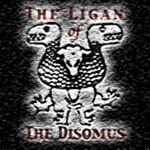
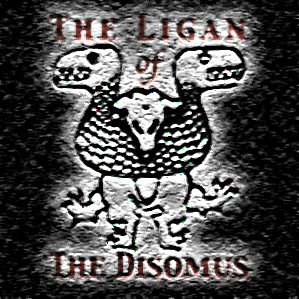 Rather than merely jumping on the NaNoWrimo IntNoWaMo bandwagon, or impotently griping about its drag on the business and art of writing, I decided to conduct a more useful and effective exercise during November: composing a carefully written short story in the same world as The Ligan of the Disomus.
Rather than merely jumping on the NaNoWrimo IntNoWaMo bandwagon, or impotently griping about its drag on the business and art of writing, I decided to conduct a more useful and effective exercise during November: composing a carefully written short story in the same world as The Ligan of the Disomus.
This stream of activity had several inspirational tributaries.
First: considering how Ligan ends (sorry, no spoiler for those who weren’t among the first-readers) I wanted to create a venue for “un-mysteries” preceding the Reider Case, fantasy-suspense stories that are also set in Lemaigne with the Observer as narrator.
The working title of this short story is The Crow and the Kinnebeck, but if I do end up writing more short stories of this type I will probably title the entire anthology The Lemaigne Tales : An Observer’s Casebook from the Years 285 – 295 of the Republics.
Second: a character who isn’t outlined to show up until the third novel in the series — a 6’8″ Arborstone backwoodsman named Wm. Ochsard whom the Api Men call “Welkos” the Boar — kept throwing attitude (and dialogue) in my direction, refusing to be patient for his introduction. Once I decided to write a short story, he planted a giant deerskin boot in the middle of it and refused to budge.
And, once the story comes out, you’ll see that he is not a man to take “wait a bit” for an answer.
Third: my attempts to write an essay about my writerly vision in creating the Observer’s world were coming off clumsy and biographical. And, no I do not mean auto-biographical. The scraps were beginning to sound like someone else writing about my writing years after my death. There was a “this is what Bob Dole stands for” sense of weird self-reference that was throwing off my game.
So, unhappy with the exposition, I found myself slipping the vision underneath Ochsard’s story of murder and revenge, embedding the clues, hints, nudges, and winks in the language itself so that primarily other writers, bookish types, and critics would notice.
So, November is my Personal Short Story Writing Month. Current wordcount? Only two thousand; pretty meager by NaNoWriMo standards.
Current progress? Plot outlined, psychological and philosophical conflicts identified, eight sections defined by imagery and event, major character interactions popping like corn in a hoose kettle, action sequences choreographed in draft, organizing theme and symbolism nearly complete, and the Observer grumpily plodding through the ramblings and rowdiness of Lemaigne’s corrupted denizens.
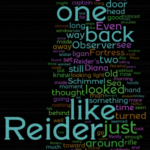
Below is a word cloud for the entire text of The Ligan of the Disomus, courtesy of wordle.net and a little PhotoShop.
